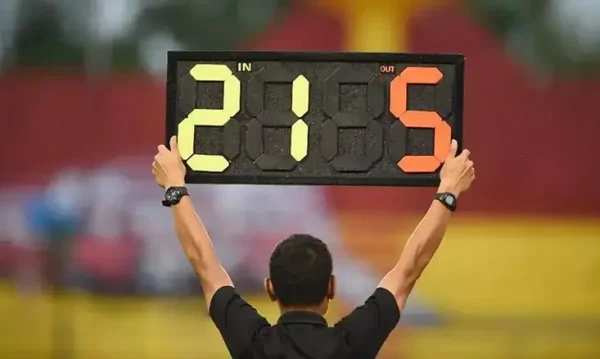For a player, a parent, or just the interested observer who approaches the game of high school soccer for the very first time, one of the most common questions asked about the length of a high school soccer game seems pretty straightforward.
However, this can get rather fiddly when accounting for rules, different age groups, adjustments in timing, and even situations with extra time.
In this article, we will outline the average length of a high school soccer game, the rules of timing in place, how it compares with other formats of soccer, and even answer some common questions about overtime and stoppage time.
By the end, you will know exactly what to expect from a high school soccer match down to the minute details that could make or break the game.
Standard Length of a High School Soccer Game

Let’s start with the basics. In the United States, a high school soccer game normally consists of two halves, each having a duration of 40 minutes, separated by a halftime break.
The total time invested in regular playing now adds up to 80 minutes.
A Quick Breakdown of High School Game Timing:
- Two Halves: Each half is played for 40 minutes.
- Halftime Break: Normally 10 minutes, but this might run slightly longer or shorter depending on the school or league.
Compared to professional soccer, with each half being 45 minutes in total length-90 minutes-high school soccer is somewhat shorter.
It considers the younger age and perhaps less seasoned endurance levels of high school athletes.
CHECK OUT | Soccer Club Fees: What Parents Need to Know Before Signing Up
Why Does High School Soccer Have 40-Minute Halves?
While high school athletes are often amazingly good, they’re generally just starting to develop the endurance that professionals have.
Forty-minute halves are a good balance: long enough to get the players into the flow of the game, not so long as to overly tax developing bodies.
This will further enable several games to be played on one day, such as in tournaments, and allow room in the athletic schedule for other activities.
CHECK OUT | Top Skills for a Successful Girls U14 Soccer Goalie: What Coaches Look For
What If the Game is Tied? (Overtime and Penalties)
One of the most exciting things about soccer is how games can change in an instant. Throughout high school soccer, the strategy to tie games can often be quite different from one competition to the other league rules, and even different states or school districts.
Here’s a breakdown of how ties are handled.
Regular Season vs. Playoff Games
- Regular Season: Most high school leagues have no penalty-kick shootout and permit a regular-season match to end with a tie. Thus, if both teams are tied at the end of 80 minutes, the game can simply end that way.
- Playoff or Tournament Games: If there must be a winner, that is during playoff games, the game carries on into overtime. Overtime in high school soccer often takes a “sudden death” or “golden goal” format, that is, the game is won by the first team that scores in overtime.
CHECK OUT | 7 Proven Ways to Get Recruited for College Soccer from High School
How Does High School Overtime Work?
Overtime normally consists of two 10-minute halves. If a team scores in this sudden-death format, the game is considered over on the spot, and that team is declared the winner.
If no one scores during the overtime halves, the game can go to a penalty shootout, where teams take penalty kicks in alternation until one team emerges victorious.
Penalty Kicks
When the score is even after regulation time and overtime, the winner of the matches is determined by penalty kicks. Each team is entitled to five players, who will shoot in turn from the penalty mark-a spot 12 yards away from the goal.
Whichever team outscores the opponent from those five kicks wins the match.
If it’s still level after five apiece, it goes to a “sudden death” shootout, with each side taking one shot per round until one shoots and the other fails.
How Does Stoppage Time Work in High School Soccer?
In professional soccer, the referees generally add “stoppage time” at the end of each half to account for the time lost to injuries, substitutions, or time-wasting tactics. The additional time is usually announced just as the regular time expires.
The standard stoppages, however, are not normally added to high school soccer. Instead, a continuous-running clock operates for each half of the game, until zero is reached, which automatically signals the end of the game.
Some leagues allow for an alternative option of having a visible countdown clock, with provisions for a pause by either the referee or the timekeeper for the specified stoppages-injuries.
That is to say, from a spectator’s point of view on the stand or sideline, it isn’t normally as ambiguous as in a professional game, where often one doesn’t know exactly how much time longer the game is going to last.
CHECK OUT | Best Youth Soccer Clubs in Michigan for Aspiring Players
What About Weather Delays and Game Pauses?
This may further be with regard to adverse weather conditions such as lightning, heavy rain, or extreme heat. In this instance, the league rules or regulations declare the condition for the restart of the game. For instance,
- Short Delays: In the case of short delays, if the conditions improve, then play can resume and the clock will continue from where it stopped.
- Long Delays or Cancellations: In the event that a game is delayed long, game officials can reschedule, abandon, or declare the current score at the end of the game if the game has reached a certain point usually after halftime.
Differences Between High School and Collegiate and Professional Soccer Game Length
If you are watching soccer at different levels, it is kind of neat to see the nuanced differences in timing rules. Here’s a quick comparison of how high school soccer’s 80-minute game stacks up against other formats
- College Soccer: Games are two 45-minute halves of play, like professional matches. One feature of college games that is not usually replicated at the professional level is the incorporation of overtime periods during regular-season matches; structure often varies by league, though.
- Professional soccer: played in two 45-minute halves with an added stoppage time as necessary to make up a standard match of 90 minutes. Extra time consists of two halves of 15 minutes each and is played only during tournaments or knockout rounds where the winner needs to be decided, followed by a penalty shootout if required.
This difference in timing denotes the skill and stamina required at each level of play plus logistical demands for each league or institution.
CHECK OUT | Do You Need Long Legs To Play Soccer?
The Use of Substitutions within High School Soccer

The management of the length of the game and energy within the players in high school soccer requires appropriate management of the issue of substitutions.
While at professional levels, the limiting of substitutions to say three or five since recent rule changes are allowed, high school soccer allows more substitutions.
High school coaches can substitute players throughout a match, which keeps players fresh and reduces overuse-type injuries while providing opportunities for more players to participate.
This is one reason high school soccer is better suited to slightly shorter halves of play: the players can maintain high energy without needing to conserve as much stamina.
Can High School Soccer Games Go Over Two Hours?
Under most conditions, high school soccer games fit rather neatly within an hour-and-a-half half timeframe. Here is an approximate timeline of what you should expect:
- First Half: 40 minutes
- Halftime: 10 minutes
- Second Half: 40 minutes
Add in overtime periods, penalty shootouts, or even weather delays, and a high school game can easily break the normal frame. The most extreme playoff games that end up going into penalty shootouts may end up pushing the total closer to two hours.
Time Management – Why It Matters in High School Soccer
Where there is a much more common sight of a countdown clock, time management becomes a major factor in strategy for coaches and players in high school soccer.
In contrast to professional soccer, where it is not always known exactly what second the half or game will end because stoppage time is added by the referee, in high school soccer, players are able to view the time ticking down on the field.
That becomes important in close games, such as when coaches can direct kids to manage a game, whether by slowing the pace of the game, fighting for possession, or through subtle substitutions that allow players to catch their breath or regain their position defensively.
This makes for real excitement for fans when they watch every second tick away and feel the urgency along with the players.
FAQs
Do all the high schools go by the same rules for timing?
Not always. Though the standard is 40-minute halves with no stoppage time, different states or leagues may have their own variations, especially in overtime rules.
It’s best to check with your local league or school’s athletic department for specifics.
What if a player gets hurt? Is the clock stopped?
In most high school games, the game-time does not stop for injuries. Sometimes officials allow teams to substitute players and resume the game after the injured player is attended to.
Can the referee add time to the game?
Rarely, some high school games may allow referees to add a few seconds to the end of each half if the rules permit. But for the most part, the clock simply expires at the end of 40 minutes, without any stoppage time added on.
Is there a mercy rule in high school soccer?
Whereas most league high school games have the mercy rule: if one team is winning by a huge margin-usually in the second half of the game-the game can be called to prevent excessive scoring and to keep a more sportsmanlike environment.
Wrapping up
High school soccer games may be shorter than college and pro ones, but that does not make them any less competitive. With 80 minutes of regular play, the possibility of overtime, and penalty kicks, let alone a number of rules and tactics surrounding the keeping of time, these matches are truly exciting for participants and onlookers alike.



